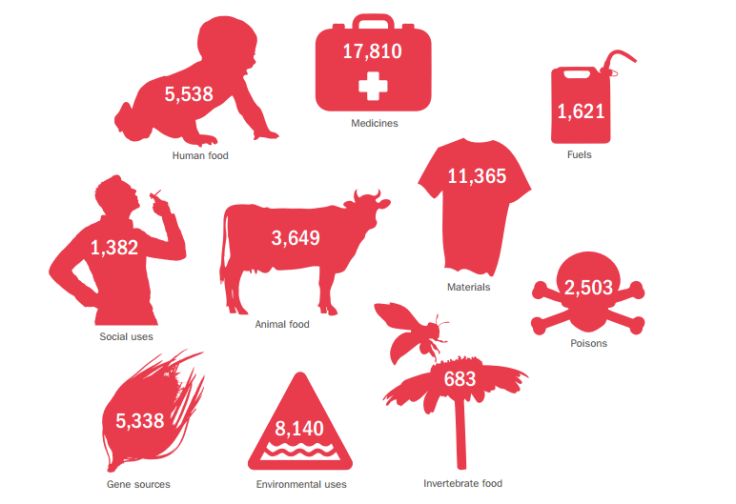A Fifth Of World’s Plant Species Now Face Extinction As Global Habitats Shrink

The first global assessment of the world’s flora has thrown up bittersweet findings. While roughly 2,000 new plant species are being discovered every year, of all the known plant species, a fifth are now at risk of extinction.
“To have effect, the findings must serve to galvanize the international scientific, conservation, business and governmental communities to work together to fill the knowledge gaps we’ve highlighted and expand international collaboration, partnerships and frameworks for plant conservation and use,” Kathy Willis, director of science at the Royal Botanic Gardens in Kew, London, said in a statement released Monday.
First, the good news. The “State of the World’s Plants” — authored by 80 scientists — reveals that there are currently roughly 391,000 plant species known to science and about 2,000 new species are still being added to the list every year.
In 2015, for instance, scientists discovered 2,034 species of plants, most of them in Australia, Brazil and China. Among the plants discovered in 2015 was an insect-eating sundew named Drosera magnifica. This plant grows to a height nearly five feet, making it one of the three largest sundews known to humans. This plant, which grows only at the top of a mountain in Minas Gerais in Brazil, was first discovered on Facebook, when a sundew specialist was reviewing photos taken years earlier by an orchid hunter.
“New species of trees, shrubs and herbaceous plants have been discovered, including some new plants from well-known horticultural families, food crops, grasses and carnivorous plants. In addition to those found during fieldwork, there are also new species that have been discovered as a result of re-examining herbarium sheets, which often contain plant specimens collected many years ago,” the report said.
However, the not-so-good news is that several of the new species discovered in 2015 are already believed to have gone extinct.
“One is a 12–15 m tall tree species of Ghana and Ivory Coast, where its dry forest habitat has been reported as cleared for agriculture or destroyed by fires. Another species that is thought to be extinct is the smallest known flowering plant species published in 2015, a minute, 3–4 mm tall herb of the waterfall-specific family Podostemaceae. The only known locality for this species is now the site of a hydroelectric dam, and diamond-mining has turned the river waters brown and turbid, a death-sentence for plants of this family,” the report said.
And these are far from the only species that have gone extinct in recent years. Although it is hard to estimate the exact number of plant species that have been wiped off the face of the planet, habitat loss — primarily due to conversion of forests to farming land — influx of invasive species, and climate change are now threatening 21 percent of the world’s plant species.

“The growing international trade in palm oil during the past 20 years, for example, has had significant effects on the conversion of natural forest and peatlands to palm oil plantations, with associated impacts on biodiversity,” the report said. “ Agriculture expansion and the destruction of tropical forests threaten the survival of many species, and degradation of habitat was identified as the main threat to 85 percent of the threatened species on the IUCN Red List.”
Of the 390,000 species known to humans, 31,128 have known uses as medicines, food or building material , making a comprehensive analysis of what we know about them — and documenting what we don’t — of utmost importance. Keeping this in mind, scientists now aim to carry out the global survey every year.
“This is just scratching the surface. There are thousands out there that we don't know about,” Willis told the BBC.
© Copyright IBTimes 2024. All rights reserved.






















